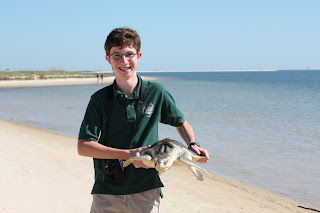One important factor in songbird decline was habitat loss. Of the 1 billion or so acres of primary forest that covered Eastern North America before the land was settled, little to none of the original virgin forest remains, at least in pieces large enough to sustain the songbirds at their former level.
Another important factor in the decline of songbirds is the competition with non-native species. The two most notorious are the European starling and European house sparrow. These two are cavity nesters which are known for driving many of our most beautiful or rarest birds from their homes, such as the eastern bluebird. House sparrows have even been known to kill bluebirds while attempting to drive them from their nests. In addition to nest depredation, competition for food among our natives and the many exotic species brought into this country can be fierce.
Finally, house cats, the scourge of all small birds, kill hundreds of millions of our native songbirds every year. Many people will argue that that is the nature of cats; they are hunters. While I will not argue this point, I will argue that until European man came to America, we did not have felis domesticus or felis catus, which are latin names for the domestic housecat. Therefore, every songbird that a housecat kills is an unnecessary death that goes against natural order. And our native songbirds' defenses against such a numerous and efficient predator are not what they should be. (Mind you, I have two housecats myself, and I love them to death, but I do spray them in the face with water when I catch them attacking birds.)
These three problems present the main threat to the health of our native songbird populations, and they need our help. The majority of land suitable for songbirds to live on is in private hands. Planting native shrubs, trees and plants in your yard, as well as providing a bag or two of birdseed along with some water every now and again, can go a long way towards helping our songbirds and many other of our native species. When we ignore the birds, it is to our own folly, for they die as the land dies, and it will be a dark day indeed if we see them go. But if we all do our part, this earth can be a paradise that all of our descendants will be proud to call home.
The two songbirds in the photos are a male common yellowthroat (top) and a rose breasted grosbeak (bottom.)







